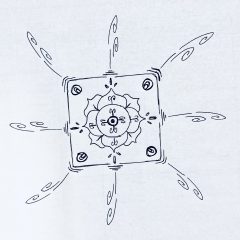This complex realm of study is becoming increasingly more complex as we understand the roles of neurotransmitters, hormones, pathways of the autonomic, peripheral, and central nervous systems. Further, the interesting use of functional MRI studies with subjects such as experienced meditators, psychedelic users, chronic pain patients, etc. is helping us understand the complex inter-relationships between the mind, chemicals, the environment, and the body. In the realm of trauma, albeit psychological or physical, and the role of the autonomic nervous system. This refers to the branch of the nervous system that controls automatic function such as breathing, digesting, heartbeats, etc. There are 2 branches of the autonomic nervous system, one being the sympathetic (activation of the fight/fight/freeze response) and the other being parasympathetic (see activation of the rest/digest response). In those who suffer from hypervigilance, in other words, being on edge chronically, manifesting itself is chronic anxiety, paranoia, posttraumatic stress syndrome, there is an over activation of the sympathetic nervous system. This can result in such things such as irritable bowel syndrome, chronic pain, insomnia, and other such issues. While the sympathetic nervous system serves an appropriate role in survival, in the case of needing to activate an elevated heart rate, dilated pupils, etc. to escape threat of a bear attack, when it is overactive, it leads to chronic disease. Osteopathic techniques such as rib raising, and treatments of the vagus nerve, can increase parasympathetic activation, and decrease chronic fight or flight responses. This can help in treatment of patients with hypervigilance and chronic pain. Further, psychedelic therapy has been found to be helpful in those with posttraumatic stress syndrome, and helping realize the root of maladaptive post trauma responses, and allowing patients to be less reactive to the symptoms, and work through their hypervigilance in a more therapeutic manner. There is much work being done and the use of MDMA for PTSD, currently in phase 3 trials, in conjunction with psychedelic integration therapy, which is showing some very promising results.

